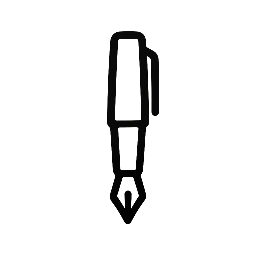Paint protection film (PPF) is a clear, durable layer applied to a vehicle’s surface to protect the paint from scratches, chips, and environmental damage. It acts as a shield, preserving the car’s appearance and increasing its longevity without altering its look.
Many car owners use PPF to maintain resale value and avoid costly paint repairs. This film is especially useful for those who want long-term protection without frequent maintenance or waxing.
Understanding how PPF works and what benefits it offers can help anyone decide if it’s the right investment for their vehicle care routine.
Understanding Paint Protection Film
Paint protection film (PPF) is a transparent layer applied to a vehicle’s surface to shield it from damage. It offers physical defense without altering the appearance of the paint. Different types serve distinct protective purposes.
What Is Paint Protection Film
Paint protection film is a clear, durable polyurethane film installed on vehicles. It guards paintwork against scratches, chips, stains, and minor abrasions caused by road debris and environmental factors. The film is thick enough to absorb impacts that would otherwise damage the paint.
Professionally applied, it adheres closely to the vehicle’s curves and edges. While often used on high-impact areas like hoods, bumpers, and side mirrors, it can cover an entire car for maximum protection. Its transparent nature preserves the paint’s original color and gloss.
How Paint Protection Film Works
The film absorbs and disperses kinetic energy from impacts such as stone chips and minor collisions. It is resistant to yellowing and cracking over time due to UV stabilizers in its composition.
Its self-healing property allows minor surface scratches to fade when exposed to heat, either from the sun or a warm environment. Adhesive backing bonds securely without damaging paint upon removal.
Regular cleaning removes contaminants, preventing degradation. PPF provides protection without interfering with paint breathability or finish texture.
Types of Paint Protection Film
PPF varies mainly by thickness, texture, and specialized coatings. Common types include:
- Standard Glossy PPF: Offers clear protection with a shiny finish, maintaining factory paint appearance.
- Matte PPF: Provides a satin finish, ideal for matte-painted vehicles, preserving the unique look.
- Self-Healing PPF: Contains an elastic top layer that repairs minor scratches automatically in warm conditions.
- Ceramic-Coated PPF: Adds hydrophobic properties for easier cleaning and improved resistance to stains and UV damage.
Thickness usually ranges from 6 to 12 mils. Thicker films offer better impact resistance but may be less flexible around complex curves.
Benefits and Installation of Paint Protection Film
Paint Protection Film (PPF) provides durable defense against physical damage and environmental wear. Proper installation and maintenance are essential for maximizing its lifespan and effectiveness. The following details highlight its key advantages, installation choices, and care requirements.
Advantages of Paint Protection Film
PPF guards vehicle surfaces against scratches, stone chips, bug splatter, and UV damage. It preserves the paint’s original finish by absorbing impacts from small debris and reducing oxidation effects.
The film is typically transparent and blends seamlessly with the paint, maintaining the car’s appearance. Many films feature self-healing properties, allowing minor scratches to disappear when exposed to heat.
Additionally, PPF can increase resale value by keeping the exterior in better condition. It is especially beneficial for high-mileage drivers or those frequently exposed to harsh road conditions.
Professional vs. DIY Installation
Professional installation of PPF ensures precise fitting and avoids issues like bubbles, wrinkles, or lifting edges. Experts use specialized tools and cleaning techniques to prepare surfaces for optimal adhesion, increasing film durability.
DIY kits are available but often require skill and patience. Incorrect application can lead to trapped dust, poor adhesion, or uneven edges, which may reduce protection quality.
Professionals also provide warranties that cover installation defects, adding peace of mind for vehicle owners. DIY might save money upfront but carries higher risk for errors that could shorten film life.
Caring for Paint Protection Film
Regular cleaning with mild soap and water prevents dirt and contaminants from building up on the surface. Avoid harsh chemicals or abrasive materials that can damage the film.
Waxing is generally not needed, but if applied, use products compatible with PPF to avoid clouding or peeling. Inspect edges periodically for lifting, and address issues early to maintain adhesion.
Avoid high-pressure washers within a few inches of edges to prevent film peeling. Proper care extends the protective qualities and appearance of the film for years.


Leave a Reply